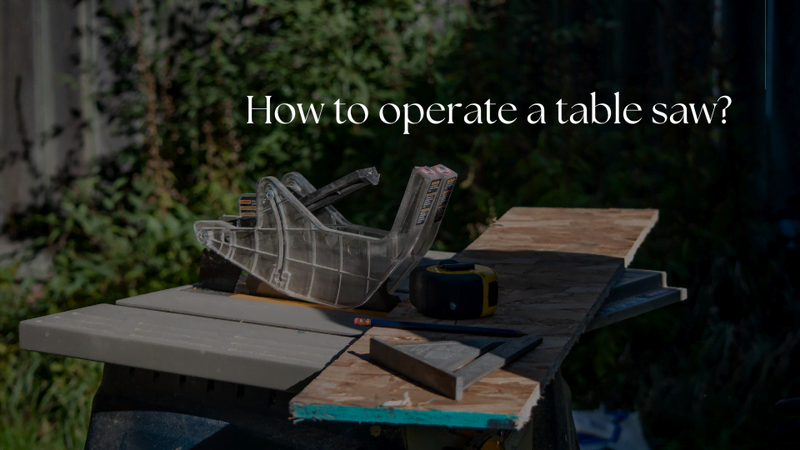Before you start, make sure you're safe. Here's what to wear:
Safety First! Let’s read in detail how to operate a table saw safely!
– Eye Protection: Use safety glasses or a face shield to protect your eyes from flying wood chips.
– Hearing Protection: Wear earplugs or earmuffs to shield your ears from loud noise.
– Dust Mask: A mask helps remove wood dust from your lungs.
– Close-Fitting Clothes: Wear snug clothing; avoid loose sleeves or jewelry that can get caught.
– Sturdy Shoes: Wear proper shoes—no flip-flops or bare feet!
Read more Table Saw blogs
How to Operate a Table Saw Safely (Video Guideline)
Know Your Table Saw
Familiarize yourself with the main parts of the table saw:
– The Table: This is where you place your wood. Could you keep it clean?
– The Blade: Learn to adjust the height and angle. This is the part that cuts, so respect it!
– The Fence: This keeps your cuts straight. Make sure it’s locked securely.
– Miter Gauge: Used for cutting at angles, it should slide easily in the table’s slots.
– Safety Features: The blade guard covers the blade, the riving knife prevents wood from pinching the blade, and anti-kickback pawls help stop wood from flying back at you.
– Power Switch: Know where the power switch is for easy access in an emergency.
Making Cuts
Now that you’re ready, here’s how to make a rip cut (cutting along the grain):
1. Measure Carefully: Measure your wood accurately. Check it more than once!
2. Set the Fence: Adjust the fence to your desired width and lock it in place securely.
3. Adjust Blade Height: Set the blade about ¼ inches (6mm) above the surface of the wood.
4. Position the Wood: Rest the wood flat on the table, with one Side against the fence.
5. Stand to the Side: Always stand to the Side of the blade to avoid injury if kickback happens.
6. Push the Wood Through: Use a push stick for narrow pieces and feed the wood steadily through the blade, keeping it against the fence. Don’t rush—let the blade do the work!
7. Follow Through: Keep pushing until the wood is completely past the blade before stopping.
8. Turn Off the Saw: After finishing, turn off the saw and wait until the blade stops spinning before retrieving your wood.
Crosscutting
For crosscuts (cutting against the grain), use the miter gauge:
1. Measure and Mark: Again, precision is key!
2. Set the Miter Gauge: Adjust it to the correct angle and secure it.
3. Position Your Wood: Place your wood against the miter gauge, ready for the cut.
By following these steps, you can enjoy woodworking safely and effectively!


